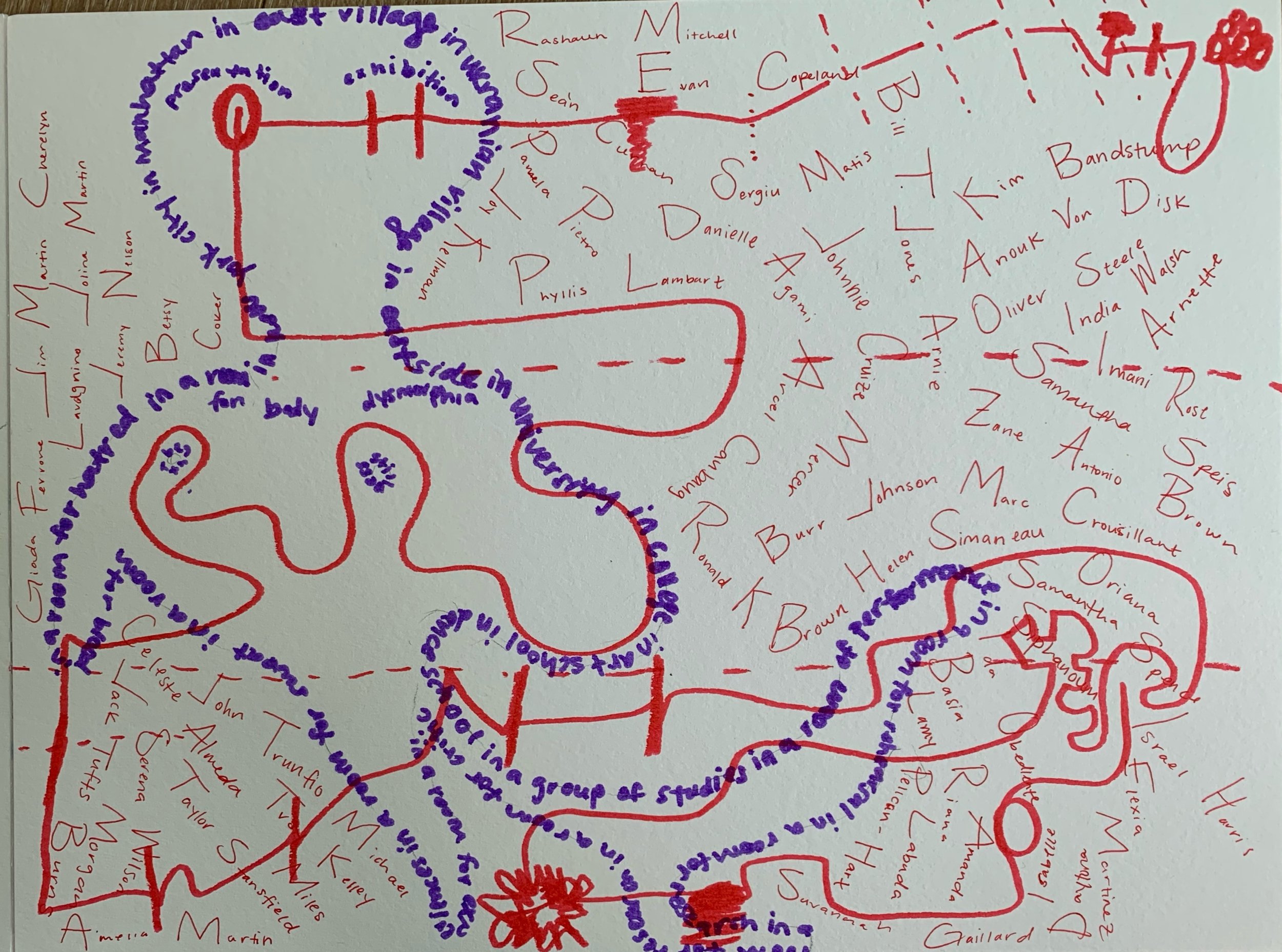
HyperPsychoGeo
Studio 1 | Tim Durfee | Media Design Practices
Systems Prototype
Tools: Photoshop, InDesign, Cinema 4D, Drawing tools
Role: self-directed
Pick an object or a space that either has direct personal significance for you, or about which you have (or can acquire) a lot of knowledge (or opinion) and create a map out of it.
Maps are in between forms of information. They are a proxy of the real-world to understand information. There are located ethics intertwined in the making of a map in relation to the information shared. Implicit decisions are put to what is in and not in a map.
This process is a memory place. A memory technique of creating an imaginary world to attach memories, speeches, what have you.

Prompt:
Capture or reproduce this object or space. This could be a photograph (where the non-relevant parts are removed), or a collage of photos, or a 3D model, or a digital or hand drawing.
Using the subjective principles of the Situationist psychogeography as a point of inspiration and departure, annotate this object or space with no fewer than 100 comments (stories, memories, and/or facts), each visually connecting to the specific spot or region to which they refer.
Process:
For this process I attempted to reproduce a set improvisational dance piece, Shuffle 1. My overall issue was creating separating the idea of a TRAIL versus a MAP
create a trace versus a guide to go
map a recording of space
visualizing an interface to explain the way one engages with the location
What happens in the SCORE? What is important - the visualization of the space and how it changes over the course of the piece, an individual’s movement pattern around the space, or the overall flocking nature of the bodies in space over the course of the piece?
create a logic for the reader
where does the reader go?
how are they oriented in this mapped space?






